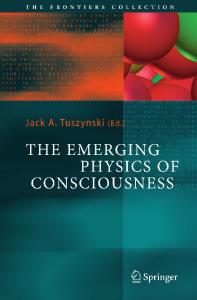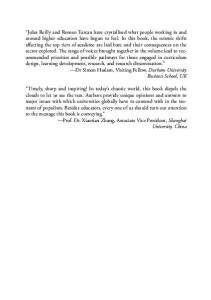The Problem of Consciousness
The chapter contains various documents connected with the problem of consciousness: accounts of internal conferences, book plans, and reflections.
- PDF / 234,559 Bytes
- 20 Pages / 439.37 x 666.142 pts Page_size
- 89 Downloads / 357 Views
The Problem of Consciousness
The chapter contains various documents connected with the problem of consciousness: accounts of internal conferences, book plans, and reflections. The crucial events of this period were the internal symposium “About the perspectives of our research,” held on December 4, 1932, and Vygotsky’s 7 hour long talk about consciousness on the next day, of which two versions have reached us: Leont’ev’s summary with additions by Zaporozhets (Vygotsky 1997, pp. 129–138), and Luria’s summary (Luria 2014). The symposium and the talk marked the theoretical transition from sign to meaning and to the study of consciousness as a whole, and it immediately led to plans for new research and new books that would testify of the new “height” psychology. It becomes increasingly clear that Thinking and speech was just an intermediate stage on the road toward a much broader, much more ambitious book. In the preface to Thinking and speech, Vygotsky writes that he considers the problem of thinking and speech as being the key to a new theory of consciousness, but, as we know, the book contained primarily older material and very little of the newer ideas. Elsewhere we have analysed the outlines of this new theory of consciousness on the basis of published fragments and personal notes (Zavershneva 2014). As will be seen later in the text, Vygotsky found the evidence for this new theory in four groups of facts: Asya, Shereshevskiy, schizophrenia, and Khlebnikov. “Asya” refers to children’s first questions, which in Vygotsky’s opinion were about sense, not meaning, and marked an important transformation of the child’s mind. The case of Shereshevskiy represented a case of anomalous development where the psychological system is primarily based upon memory. Schizophrenia illustrated the disintegration of the semantic structure of consciousness, and the case of the futurist poet Khlebnikov was an example of exceptional development in the form of poetic creativity.
Consciousness without the word This is a note written in violet ink on two sheets of an exercise book and dated October 25. Although the year is not indicated, we can almost be sure it was written in 1932 because a number of formulations coincide with those of “Propositions to Luria’s talk” (see the previous chapter) and “The problem of consciousness.” The text comes after the symposium in October and prepares the symposium in December. We see that Vygotsky touches upon an essential problem of his theory: the question of the beginning of consciousness, its preverbal origin. From point 24 onward, the ink color slightly changes, and we suspect the rest of the text is a later addition, possibly written early 1933. If this is true, Vygotsky’s reference to “last year’s talk” is a reference to his talk about consciousness on December 5, 1932. © Springer Nature Singapore Pte Ltd. 2018 E. Zavershneva and R. van der Veer (eds.), Vygotsky’s Notebooks, Perspectives in Cultural-Historical Research 2, https://doi.org/10.1007/978-981-10-4625-4_17
271
272
17
The Problem of
Data Loading...











